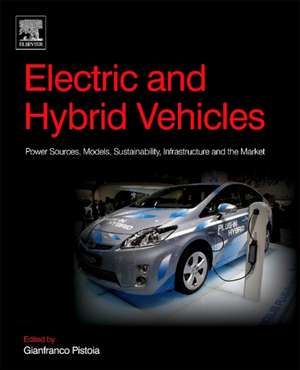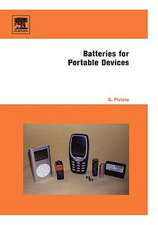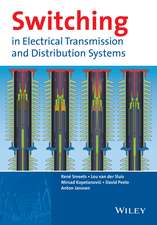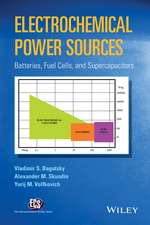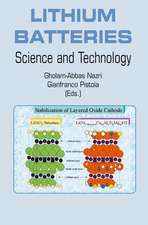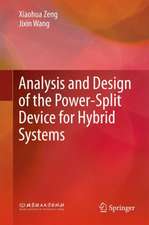Electric and Hybrid Vehicles: Power Sources, Models, Sustainability, Infrastructure and the Market
Editat de Gianfranco Pistoiaen Limba Engleză Paperback – 18 aug 2016
Throughout this book, especially in the first chapters, alternative vehicles with different power trains are compared in terms of lifetime cost, fuel consumption, and environmental impact. The emissions of greenhouse gases are particularly dealt with. The improvement of the battery, or fuel cell, performance and governmental incentives will play a fundamental role in determining how far and how substantial alternative vehicles will penetrate into the market. An adequate recharging infrastructure is of paramount importance for the diffusion of vehicles powered by batteries and fuel cells, as it may contribute to overcome the so-called range anxiety."" Thus, proposed battery charging techniques are summarized and hydrogen refueling stations are described. The final chapter reviews the state of the art of the current models of hybrid and electric vehicles along with the powertrain solutions adopted by the major automakers.
- Contributions from the worlds leading industry and research experts
- Executive summaries of specific case studies
- Information on basic research and application approaches
Preț: 940.37 lei
Preț vechi: 1033.38 lei
-9% Nou
179.96€ • 195.41$ • 151.17£
Carte tipărită la comandă
Livrare economică 15-29 aprilie
Specificații
ISBN-10: 0444638253
Pagini: 670
Dimensiuni: 191 x 235 mm
Greutate: 1.16 kg
Editura: ELSEVIER SCIENCE
Cuprins
Descriere
Electric and Hybrid Vehicles: Power Sources, Models, Sustainability, Infrastructure and the Market reviews the performance, cost, safety, and sustainability of battery systems for hybrid electric vehicles (HEVs) and electric vehicles (EVs), including nickel-metal hydride batteries and Li-ion batteries.
Throughout this book, especially in the first chapters, alternative vehicles with different power trains are compared in terms of lifetime cost, fuel consumption, and environmental impact. The emissions of greenhouse gases are particularly dealt with. The improvement of the battery, or fuel cell, performance and governmental incentives will play a fundamental role in determining how far and how substantial alternative vehicles will penetrate into the market. An adequate recharging infrastructure is of paramount importance for the diffusion of vehicles powered by batteries and fuel cells, as it may contribute to overcome the so-called range anxiety."" Thus, proposed battery charging techniques are summarized and hydrogen refueling stations are described. The final chapter reviews the state of the art of the current models of hybrid and electric vehicles along with the powertrain solutions adopted by the major automakers.
- Contributions from the worlds leading industry and research experts
- Executive summaries of specific case studies
- Information on basic research and application approaches
